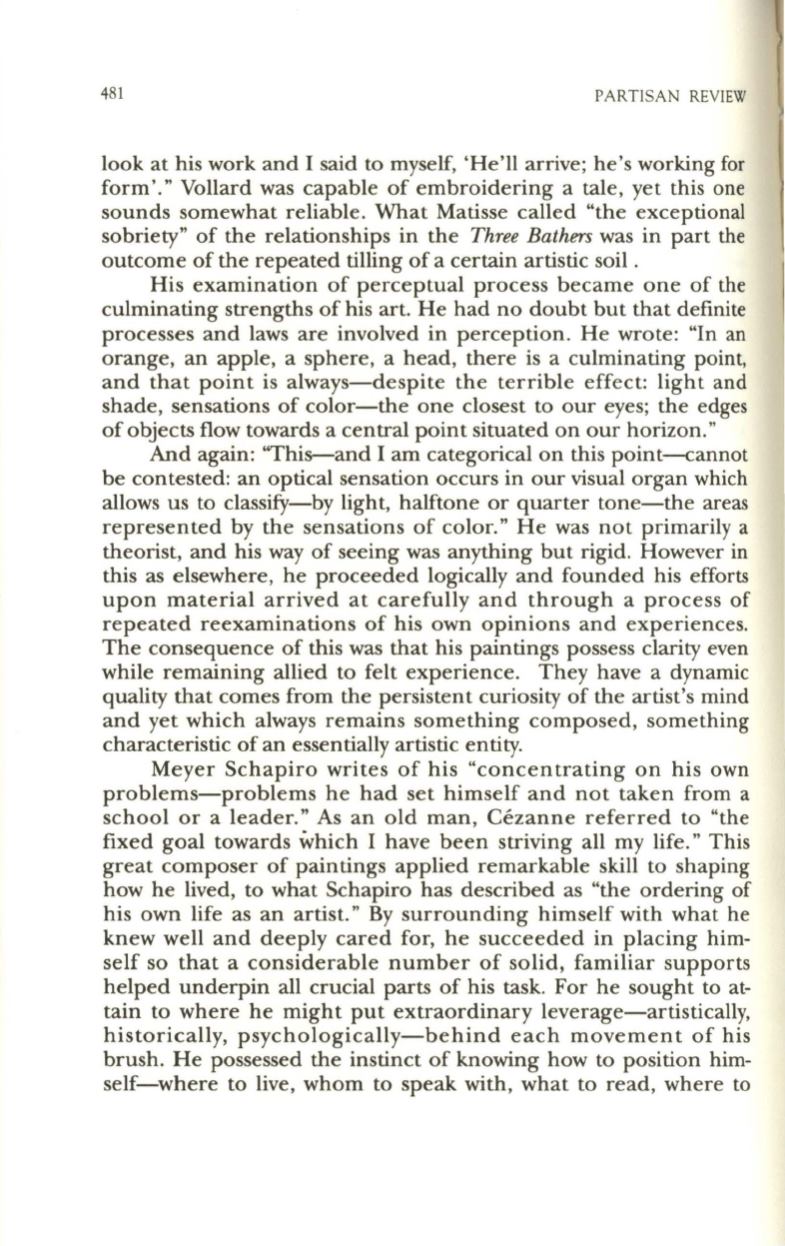
481
PARTISAN REVIEW
look at his work and I said to myself, 'He'll arrive; he's working for
form'." Vollard was capable of embroidering a tale, yet this one
sounds somewhat reliable . What Matisse called "the exceptional
sobriety" of the relationships in the
Three Bathers
was in part the
outcome of the repeated tilling of a certain artistic soil .
His examination of perceptual process became one of the
culminating strengths of his art. He had no doubt but that definite
processes and laws are involved in perception. He wrote: "In an
orange, an apple, a sphere, a head, there is a culminating point,
and that point is always-despite the terrible effect: light and
shade, sensations of color-the one closest to our eyes; the edges
of objects flow towards a central point situated on our horizon."
And again: ''This-and I am categorical on this point--cannot
be contested: an optical sensation occurs in our visual organ which
allows us to classify-by light, halftone or quarter tone-the areas
represented by the sensations of color." He was not primarily a
theorist, and his way of seeing was anything but rigid. However in
this as elsewhere, he proceeded logically and founded his efforts
upon material arrived at carefully and through a process of
repeated reexaminations of his own opinions and experiences.
The consequence of this was that his paintings possess clarity even
while remaining allied to felt experience. They have a dynamic
quality that comes from the persistent curiosity of the artist's mind
and yet which always remains something composed, something
characteristic of an essentially artistic entity.
Meyer Schapiro writes of his "concentrating on his own
problems-problems he had set himself and not taken from a
school or a leader." As an old man, Cezanne referred to "the
fixed goal towards which I have been striving all my life ." This
great composer of paintings applied remarkable skill to shaping
how he lived, to what Schapiro has described as "the ordering of
his own life as an artist." By surrounding himself with what he
knew well and deeply cared for, he succeeded in placing him–
self so that a considerable number of solid, familiar supports
helped underpin all crucial parts of his task. For he sought to at–
tain to where he might put extraordinary leverage-artistically,
historically, psychologically-behind each movement of his
brush. He possessed the instinct of knowing how to position him–
self-where to live, whom to speak with, what to read, where to


